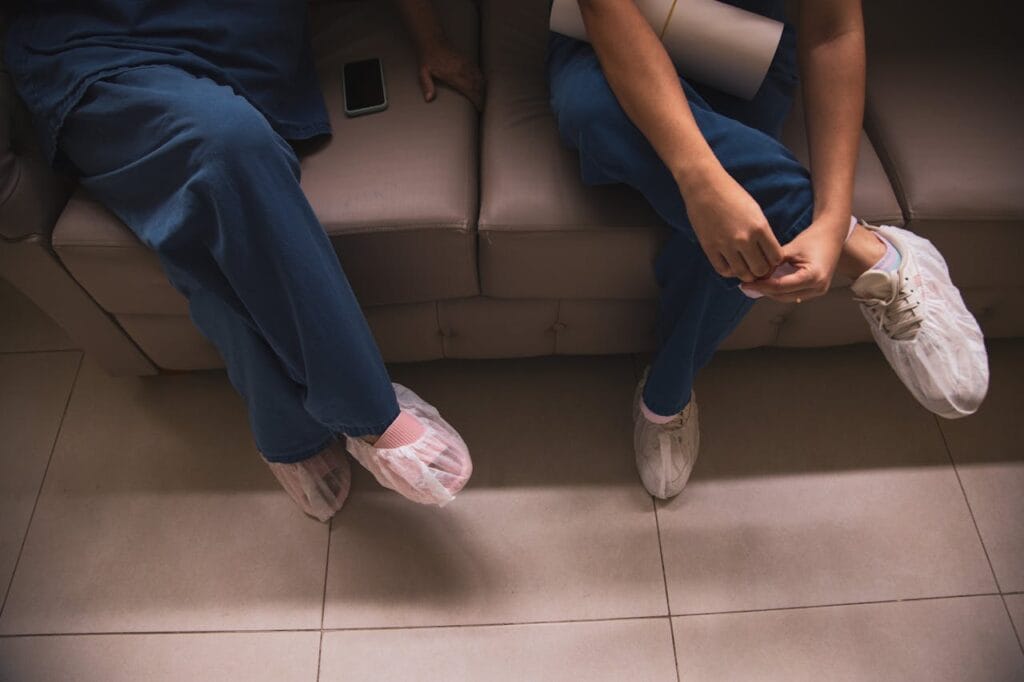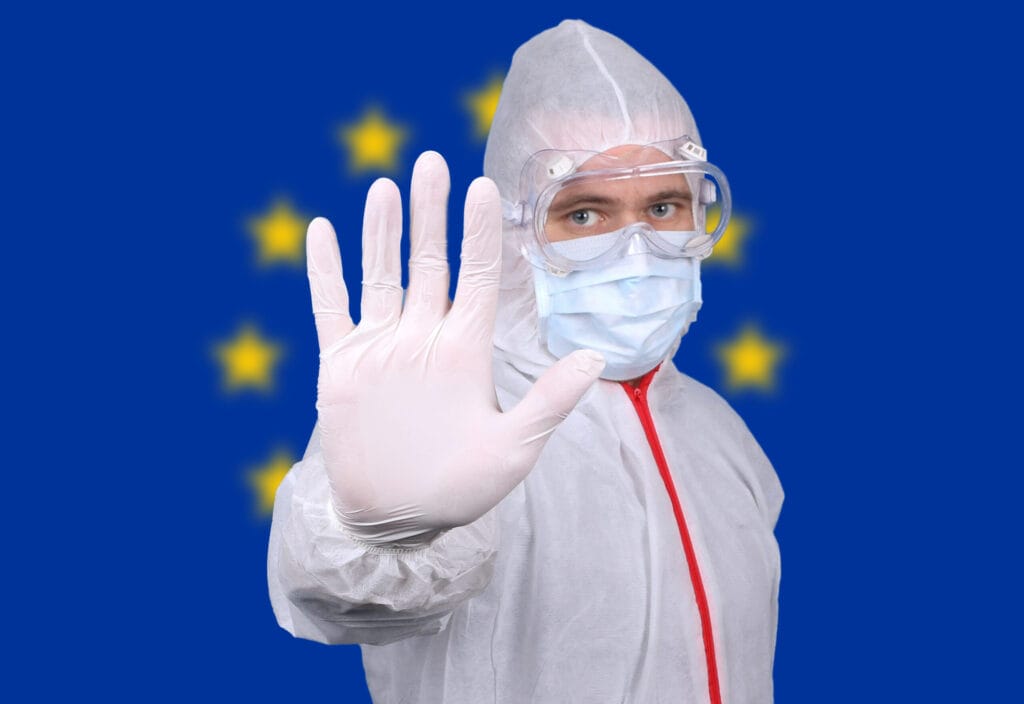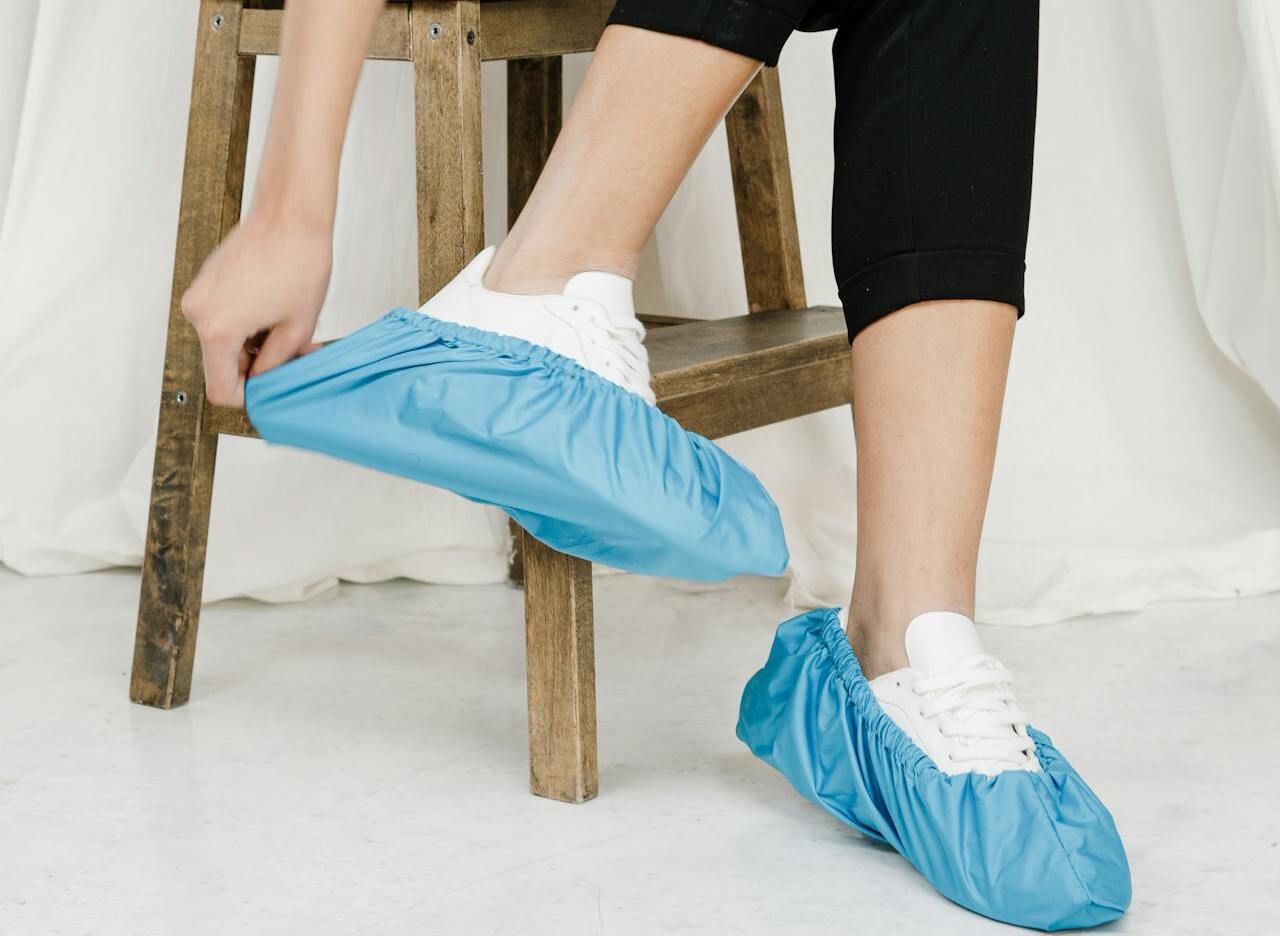It is believed that medical institutions require shoe covers to be worn on outdoor shoes, as this prevents the spread of pathogenic bacteria and viruses. We decided to check if this is true.
Administrations of clinics and hospitals (as well as beauty salons, gyms and other institutions) require visitors to wear shoe covers. On the sites manufacturers these products can be found information that shoe covers protect people with weakened immune systems in medical institutions, and not only from microbesbrought from the street, but also from chemical substancescontained in shoe treatment products. This is also discussed in description shoe cover on websites pharmacies Some sources claimthat shoe covers, on the contrary, protect shoes from contact with harmful microorganisms when visiting the hospital and, accordingly, from their further spread outside the clinic.
Disposable shoe covers - These are protective covers for shoes, usually made of non-woven material (for example, polyethylene). What they can definitely be useful for is for keeping indoor floors clean, especially in the autumn-winter period, when there are often puddles and slush outside. However, the effectiveness of shoe covers in this matter greatly depends on the type of shoes they are worn on: most likely, shoes or boots with stiletto heels will quickly tear the thin plastic, and dirt from the sole will still end up on the floor.
A huge number of viruses and bacteria actually settle on outdoor shoes. Microbiologist Charles Gerba, a professor at the University of Arizona, conducted a study in 2007 experiment: gave ten participants new shoes, and two weeks later examined their socks and shoes for germs. On average, there were 421,000 bacteria on the outside of the shoes (compared to just 2,900 inside). The shoes were found to contain E. coli, which causes urinary tract infections and diarrhea, as well as other bacteria that cause pneumonia and respiratory tract infections. It would seem that, if possible, it is worth protecting against the entry of these bacteria into the human body, and first of all, this is relevant for patients in medical institutions with weakened immune systems. However, it's not that simple. Firstly, shoe covers are not airtight, which means they cannot be considered a reliable barrier against germs. Secondly, scientists who conducted research on this topic were unable to confirm the effectiveness of shoe covers as a means of protection.

Back in 1991, British researchers conducted experiment: They asked hospital staff to wear shoe covers in the operating room for two weeks, and then stop wearing them for another two weeks. In both phases of the study, the scientists chose five days, during which they measured the number of bacteria on the floor four times in five different zones. There was no statistically significant difference in the number of microbes when wearing shoe covers and without them. Similar in 2006 experiment carried out by Indian scientists. Unlike the British, they measured the amount of bacteria not only on the floor, but also in the air. Like their colleagues, Indian researchers failed to detect any significant difference when wearing shoe covers and without them.
In 2012 this question interested Pakistani scientists. Over the course of six months at one Islamabad hospital, they tracked infection rates, mortality rates and length of stay of patients admitted to the intensive care unit. At the same time, from January to March the hospital refused to use shoe covers, and from May to July, on the contrary, they strictly required staff and visitors to wear them. It turned out that in the second stage, the length of stay of patients in the hospital was lower, but the number of people infected with the most common pathogens in intensive care units, oddly enough, was higher. Perhaps the increase is due to the fact that when putting on shoe covers, visitors touched their shoes (which, as mentioned earlier, actually have a lot of bacteria on them) and thus transferred pathogens to their hands, and then passed them on to their sick relatives and friends literally “from hand to hand.” There was no statistically significant difference in mortality rates. Scientists have concluded that shoe covers do not protect against infections.
As for the question of whether shoe covers can prevent the spread of infections outside the hospital, things are not so simple here either. Firstly, as mentioned above, they are not airtight, so they are not able to provide complete protection for shoes. Secondly, germs can settle not only on the feet, but also on other clothing and exposed parts of the body of visitors and hospital staff, so it is not clear how protecting shoes alone can prevent the spread of infection. For example, during the COVID-19 pandemic, in order to avoid infection and spread of the virus, employees of specialized medical institutions wore not just shoe covers, but special protective costumes, covering almost the entire surface of the body. Before leaving the red zone, medical staff had to remove this suit, treating their hands with an antiseptic after each item removed, so as not to transfer the infection to their regular clothes. At the same time, patients are expected to remove their shoe covers before leaving the facility, when it is no longer possible to go to the restroom and wash their hands. Not everyone carries an antiseptic with them and immediately treats their hands with it after removing shoe covers. Therefore, even if the shoes really remained “untouched,” the infection can get onto a person’s hands when he takes off his shoes, and through them to all other surfaces that he touches on the way home.

“Verified” could not find precedents or studies confirming that shoe care products can be so toxic and dangerous for hospital patients that it is necessary to protect themselves from them with shoe covers. Basic ingredients Such products - a mixture of waxes, dyes and/or solvents - can be toxic, so it is recommended to apply them to shoes with gloves in a ventilated area, avoid contact with eyes and mucous membranes, and, of course, not take them orally. However, it is doubtful that a certified shoe polish that has been approved for sale could cause any harm to bystanders long after application, even without direct contact. Of course, this cannot be ruled out, but similar cases happen with objects clothes - some low-quality dyes or materials in them can be toxic. Therefore, trying to protect yourself specifically from shoes and shoe care products is probably not advisable.
No reputable medical organization recommends wearing shoe covers, for example, when visiting patients. To protect patients from external microbes, and visitors from nosocomial infections, specialists recommend wash your hands or treat them with an antiseptic before and after visiting the ward, toilet, after touching the patient, before and after using gloves (if they were worn). It would also be a good idea to wear a medical mask if the infection is transmitted by airborne droplets. You should not visit patients while you are sick, and if you need to sneeze, you should cover your mouth with a napkin or hand. About the same recommendations They also apply to those who come to a medical institution not as a visitor, but as a patient.
Thus, shoe covers help maintain cleanliness in medical and other institutions, since in this case people do not carry street dirt into the building on their shoes. However, as a means of protection against microbes, they are apparently useless - this is confirmed by a number of experiments conducted by scientists from different countries. Shoe covers will not be able to protect healthy people outside the hospital from infections that visitors or staff can carry there; this requires much more thorough precautions. Shoe products are also unlikely to pose such a danger that they require special protection from them - at least no more than other clothing.
Cover photo: pexels.com
Read on the topic:
- University of California San Francisco. Hospital Precautions
- Is it true that in the USA it is customary to wear outdoor shoes at home?
- Is it true that you can catch many diseases by sitting on a public toilet?
- Is it true that using bar soap is unhygienic because it harbors dangerous bacteria?
If you find a spelling or grammatical error, please let us know by highlighting the error text and clicking Ctrl+Enter.






